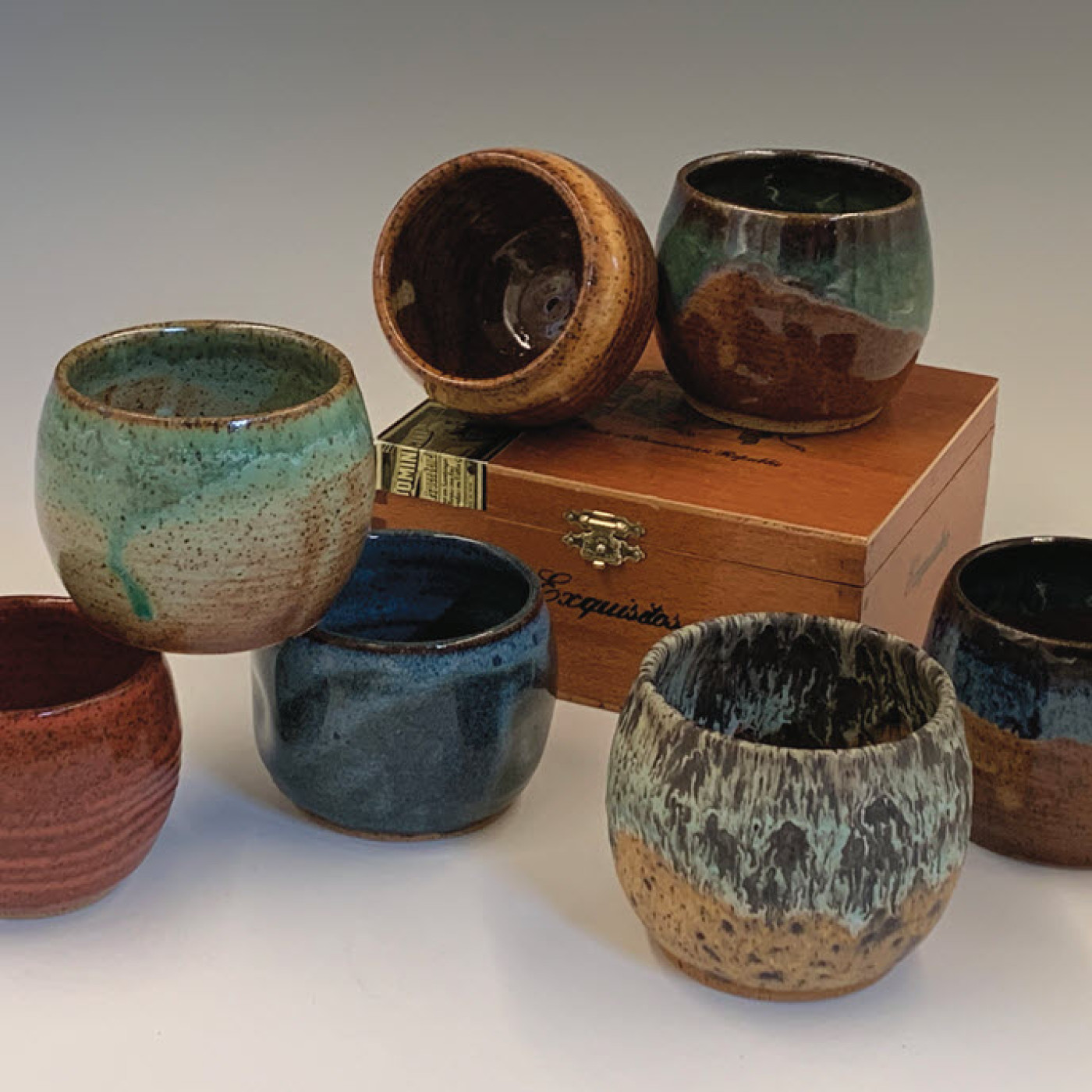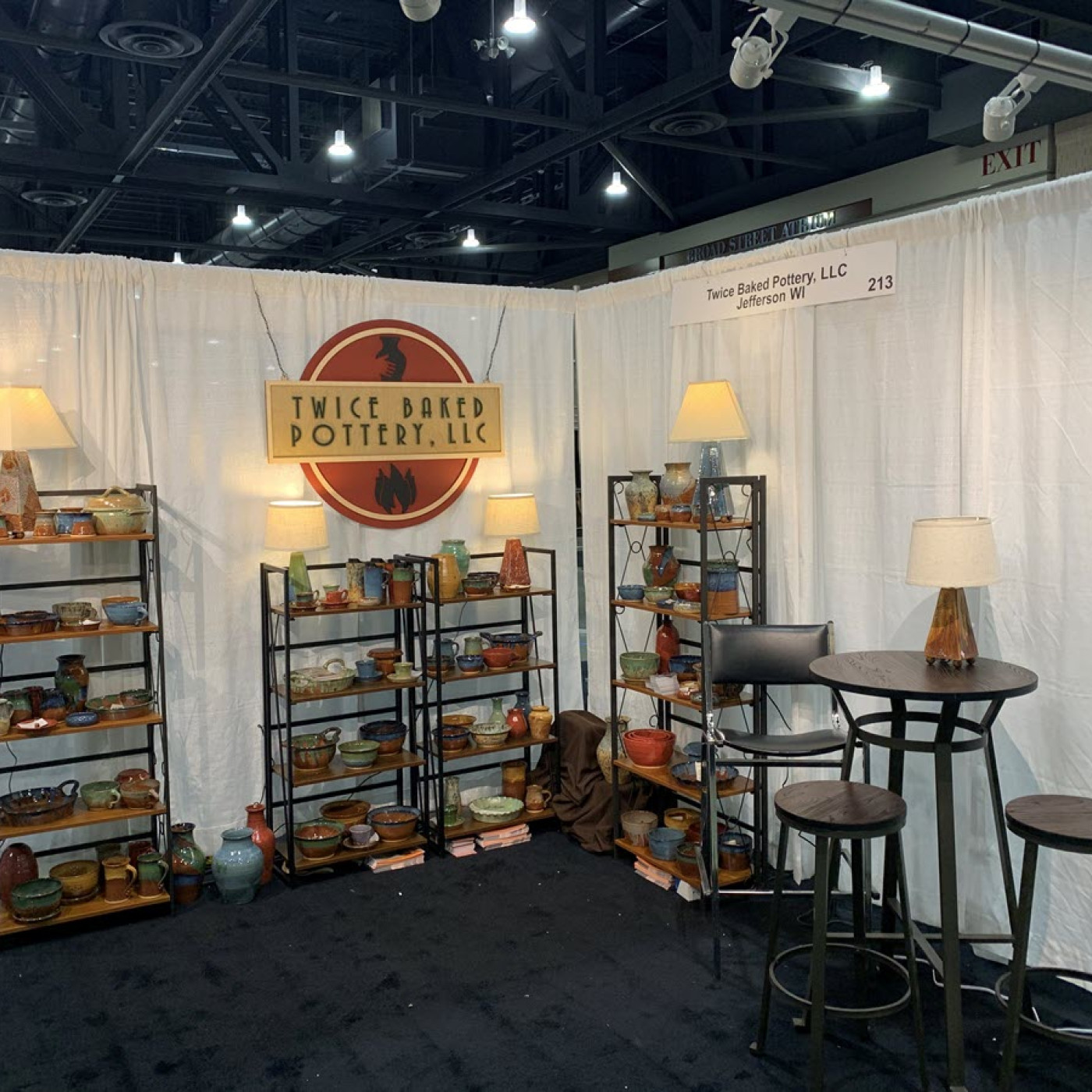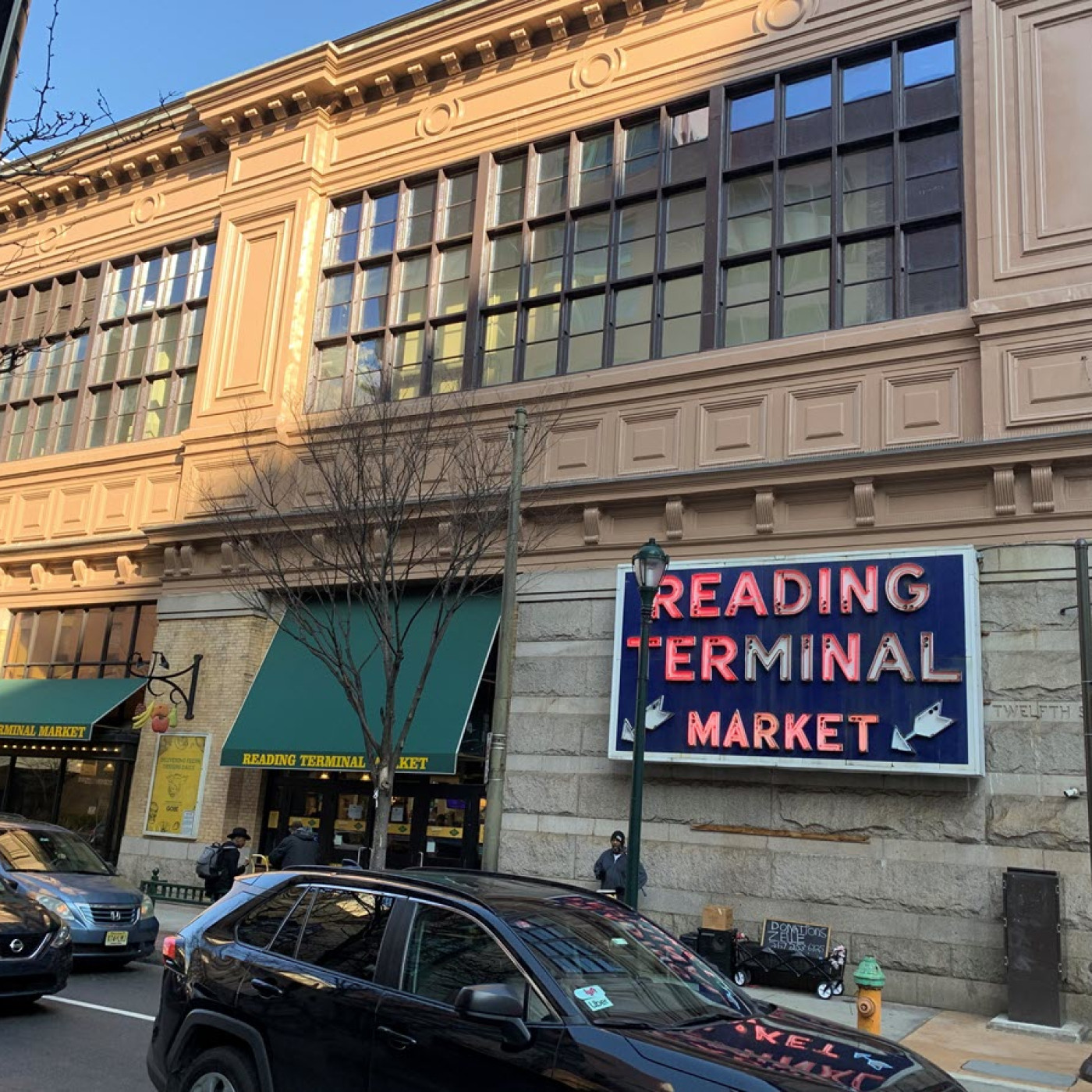From Art Shows and Retail to Wholesale How One Artist Decided To Take the Step
Trying something new is always a bit scary. This is true whether it is a new product line, style, or show.
In February, I stretched into an area that proved to be scarier than I originally anticipated — my first wholesale trade show. For me, it was a complete change not just in price point but also in marketing strategy, booth design, and business plan.
Why jump into the deep end when everything is going well? Why jump into the deep end at all? No matter what the change may be, sometimes the stretch is what we need for self-improvement and to grow our business.

When It’s Time To Change
For more than eight years, I have averaged 25 to 30 shows each year. As everyone who does an art show knows, this is hard work.
You start researching shows in the fall, apply in early winter, make travel plans after you are accepted, and then show season hits in late spring. Each show is a major project in and of itself.
Travel to the show; set up your tent and display; work hard during the show to meet as many customers as possible and sell as much as you can; tear down the display and tent; pack up the truck; and then make the long drive home. All to be repeated the following weekend. And the weekend after that. And the weekend after that.
Last year, even with some unanticipated cancellations, I did 22 shows and was on the road for roughly 90 days. This is hard work and not for the faint of heart.
Add to this the fact I am now 53 years old and not getting any younger. With all this in mind, I decided it was time to examine my business plan and explore what other options are available to me.
Store sales are going well, and I tend the shop while I work on production. Due to my aggressive show schedule, I lost 90 days of production by being on the road.
Based on that, I started to wonder whether developing a wholesale business could be both profitable and a way to solve the problem of not being able to keep up a rigorous show schedule indefinitely. Once I did the math, I concluded it just might work.
Store sales are going well, and I tend the shop while I work on production. Due to my aggressive show schedule, I lost 90 days of production by being on the road.
Based on that, I started to wonder whether developing a wholesale business could be both profitable and a way to solve the problem of not being able to keep up a rigorous show schedule indefinitely. Once I did the math, I concluded it just might work.
Takin’ Care of Business
Most of us look at wholesale and turn our noses up because the thought of selling our work for roughly half of what we normally get sounds crazy. How can we possibly make a profit if we only get paid half of what we usually do?
That was the point I was stuck on until I looked more deeply at the numbers. With wholesale, you do not have nearly the same overhead costs we encounter when we do shows.
In addition to the lost production time while on the road and at a show, you must make enough to pay for the booth fee, hotel, food, and travel. After figuring out how much product I was unable to make due to my travel schedule and then adding the costs of doing the shows, wholesale contracts made a lot more sense.
With that knowledge in hand, I decided to participate in my first wholesale trade show, in Philadelphia. American Handcrafted in Philadelphia is one of the top wholesale trade shows in the country for artists and craftspeople.
Approximately 250 artists participate. Buyers from stores throughout the country — though predominantly the Northeast — are there with the intention to buy stock for their respective galleries and gift shops for the coming year. It is pricey but well worth it if you want to start wholesaling your work.
In addition to that show, there are a number of trade shows throughout the country, some regional and some national in scope. CRAFT (Craft Retailers and Artists for Tomorrow) and other organizations can provide more information on the opportunities out there.
With wholesale, I had to learn how to market to retailers and find ways to demonstrate the value of my product and how it could be profitable for them. Since it was a new way to approach a show, I reached out to Sunshine Artist. The staff put me in touch with Diane and Madis Sulg of CRAFT.
Diane and Madis were kind enough to talk with me, giving the direction and guidance I needed to prepare for and do a wholesale trade show. I changed my display to be more boutique-like with shelving units, a pub table for meeting with clients, and track lighting.

Lighting is critical at a trade show. At first, I did not really get it. After all, one does not need to do lighting for outdoor art shows.
Trusting the advice I was given, I bought track lighting and figured out how to install it so my work would be well lit. Walking around the booths at the show, it finally made sense.
The booths that did not have lighting melted into the shadows. Lighting was critical to being noticed and to making my product stand out.
In addition to changes to my display, I had to rework how I conducted sales. Most wholesale trade shows are not point-of-purchase shows, where the customer/client pays for the product and takes it with them.
These shows are ones in which you write orders, schedule production and delivery time frames, and then get busy. You must be sure not to overcommit — try to schedule production and delivery with enough time to make and ship the orders.
I also had to change my sales pitch, though not as much as I thought I would need to. You are no longer just selling one item at a time. You are selling your product lines as a whole, as well as the reality that your customers, other retailers, will be able to sell them quickly and at a profit.
You are selling your ability to complete what you say you will complete. You are essentially selling trust in you and your vision.
A selling point I figured out during my first show was that, as someone who sells my work directly to customers, I know what they seem to like, what sells well, and what sells the fastest. Sharing this information with retailers — considering the idea of selling my work — demonstrates it can be, and is, profitable.
This is one of the most important things for a retailer to know, especially when they are contracting with you for the first time. The less risky the gamble, the more willing someone is to take the chance!
Hardworking Man
Once you get the orders, the real work begins. With my first wholesale show under my belt, I need to create a tracking system for processing and filling the orders. Since much of what was ordered needs to be produced, I will be working hard during the next 60 days to take care of everything.
New shipping methods need to be researched and perfected. Most of us are used to shipping small orders to individual customers but are not so familiar with how to package dozens, or even hundreds, of pieces for shipping. Moving into wholesale creates what I call great problems — yes, there are growing pains, but growing is what it is all about!
As you develop systems to take care of all the steps in the process, remember to not just provide great products and service to the new clients but to make the whole process a pleasant one so first-time customers become long-term customers.
Be honest with your customers, transparent if a problem arises, and always responsive. Just as we seek dependable sources for our materials, retailers look for dependable sources of product. Roll up the sleeves, get to producing, and keep customers updated.


Travelin’ Man
It is time for me to get busy. But first, I’m on a vacation to recharge the creative juices. In Sunshine Artist’s next issue, I plan to write about how important it is to look for inspiration and experience the new to invigorate our work.
Until then, have a great spring and good luck as you get ready for show season!
CLICK HERE TO READ MORE LIFE ON THE ROAD BLOG articles.